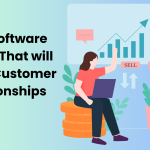Are you looking for technological development impatiently, and you are enthusiastic about innovation and keen on turning into a cloud application developer? In this article, we’ll investigate the way to becoming a confirmed Google application developer.
Many businesses face the challenge of monotonous upgrades and related crashes. The developing interest in versatility and adaptability makes it hard to anticipate the organization’s IT needs. It likewise entangles cost control extraordinarily. However, fortunately, cloud development can address this huge pile of issues.

With the growing popularity of cloud applications, the development process needs to be smooth as well. Let’s get into this article to learn a step-by-step guide on cloud application development.
What is Cloud Application Development?
Cloud application developments refer to those processes that create computer programs and software apps, which work on the internet, rather than on your computers or a local server.
A cloud-based application is in this way a software product that stores information and runs its processing rationale online as opposed to on a local server machine as web applications do. It is potential on account of far-off information servers facilitated by cloud specialist co-ops.
Step 1: Thorough Market Research
The first steps involve detailed market research, which examines the market necessities for cloud applications. This will assist you with understanding what applications will suit your business or what solutions for relocating to the cloud and characterize the best cloud-sending model for your business. Additionally, while exploring, consistently remember the objectives of your business and various elements for its appropriate working.

This will help you deal with people’s requirements. You need to note down your customer’s problem areas and distributed computing difficulties influencing your cloud applications and afterward search for potential arrangements.
Step 2: Recognize Objectives & Needs
characterize what performability and elements the application requires. Decide target clients and stages, execution necessities, administrative consistency needs, and anticipated traffic. This illuminates specialized choices down the line.
Step 3: Hiring An Expert Team for the Development of a Cloud Application
Cloud-based application development needs a specialist and capable development group. All in all, again the principal question — where to recruit cloud application designers? There are three essential choices for recruiting cloud application designers: going with consultants, fabricating an in-house group, or tracking down a confided-in seller. Look for the best providers to deal with the application. Compare between the prices of models, server choices, capacity, versatility, and oversaw administrations.
Pick a supplier that best fits the application needs and ranges of abilities of your improvement group. It’s basic to have a decent improvement group because the cloud application’s engineering should be planned cautiously and conveyed enough into the ongoing industry tasks.
Step 4: Setting Up the Cloud Environment
It’s fundamental to have a nice improvement group because the cloud application’s design ought to be arranged carefully and conveyed enough into the continuous business undertakings.
Stage 5: Design the Cloud Application

After every one of the huge elements and perspectives are ticked off the rundown, it’s the ideal opportunity for the UI/UX plan, and the interaction proceeds. The planners should foster an engaging, easy-to-use interface, empowering increasingly more end clients to communicate with the framework. The users can likewise see every one of the changes and courses of action, like remarks on them, or proposition criticism during the interaction. Then, at that point, the planners give the general assessment of the fulfillment of work.
Step 6: Select Structures & Administrations
The cloud supplier will offer services like load balancing, warning lines, document capacity, AI APIs, and so on. Assess these close-by open-source structures for the application design, information layer, UI (UI), and so on. The objective is to boost instant cloud administrations to diminish generally speaking coding time.
Step 7: Application Coding
Set up a Git-based version control work process for the codebase. Stick to stage explicit programming dialects, systems, and devices framed in the climate. Modularize application parts so they can scale autonomously. Execute hearty blunder taking care of.
Step 8: App Development & Testing
The designers then begin fostering your cloud application per your necessities and prerequisites. To no one’s surprise, cloud application arrangements are generally planned with the assistance of Scrum or Spry strategies. The advancement cycle is divided into runs (for example, 1 run = 10 working days); it starts with arranging, in which the entire improvement group examines their work liabilities. Continuously recall that cloud-local application improvement is very huge in growing such arrangements. In this way, it’s ideal to work together with a solid specialist organization at all stages because the group can envision a more extensive picture.

Step 9: Deployment & Monitoring
With testing finished, convey the creation of prepared application code and supporting cloud assets into the live climate. Screen application wellbeing measurements, logs, traffic designs, asset usage, and so forth to upgrade execution. Plan updates and deliveries. Following these means will assist with interpreting utilization prerequisites into top-notch cloud-local applications that influence cloud versatility and stage administrations to decrease functional overheads. Keep up serious areas of strength for within the meantime.
Benefits of Cloud Application
Let’s look at the key benefits of a cloud-based solution for organizations.
Flexibility:
Distributed computing permits admittance to information from any place, if there is a web association. This implies you and your group can take on more adaptable work rehearses. Everybody can rapidly get to their documents and give direct criticism when required.

Programmed Updates:
A cloud specialist organization has a solitary corporate server farm from which they can disperse updates to all clients at the same time. This guarantees that you’re continuously utilizing the most recent programming adaptation without the issue of downloading and introducing it yourself.
Conclusion
Cloud application improvement offers designers and organizations plenty of opportunities to deliver innovative, versatile, and reasonable arrangements. You might utilize distributed computing to change your product improvement projects by sticking to a bit-by-bit guide. Presently is the second to completely embrace the cloud and understand the conceivable outcomes of your application advancement projects.
If you’re looking for a customized cloud-based solution, feel free to reach out to us. Stackup Solutions is your go-to app development company that offers cloud application development to its clients across various industries. Our professionals have adequate expertise to deploy cloud-based projects with a range of additional benefits.




.jpeg)